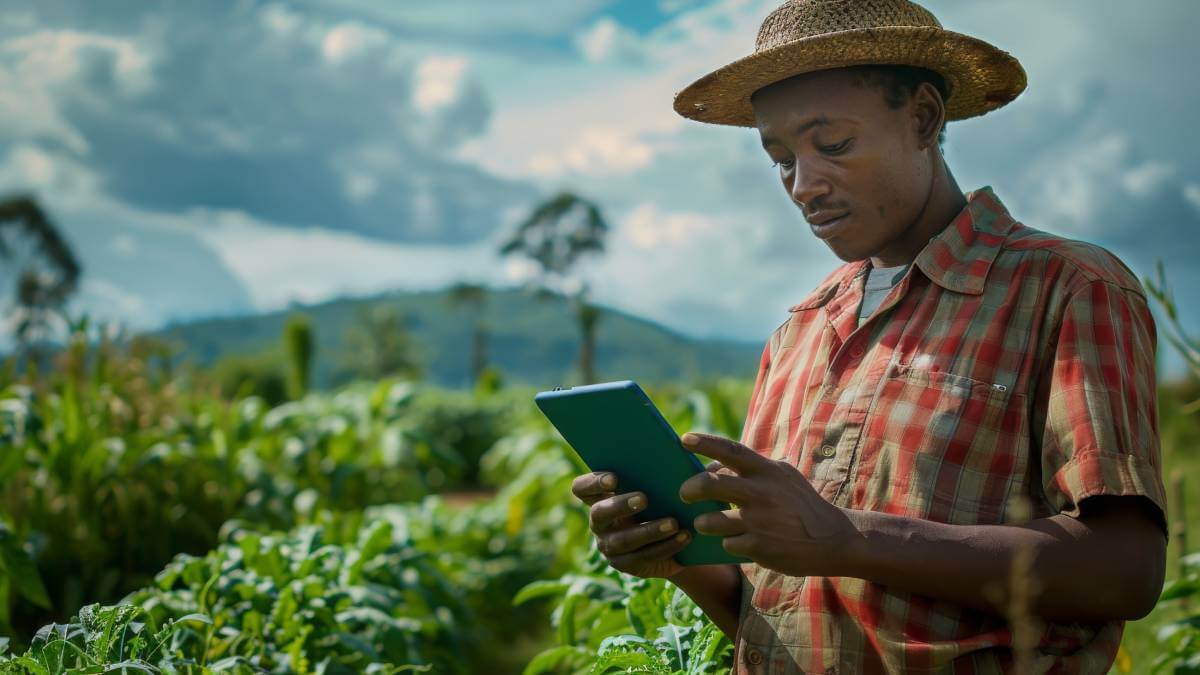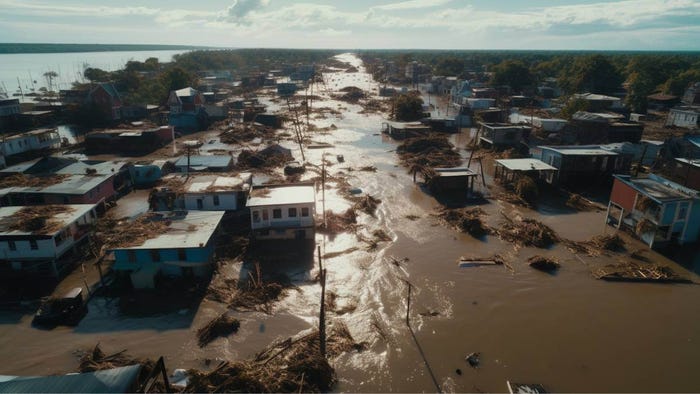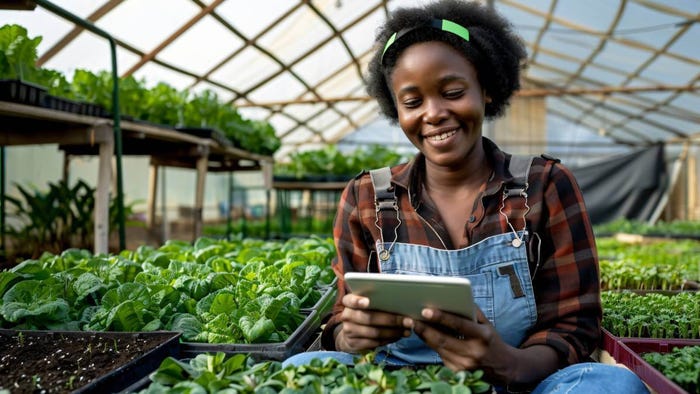Leveraging agritech to build resilience against climate changeLeveraging agritech to build resilience against climate change
ICT analyst Francis Hook discusses agritech in Africa and how the agricultural sector is using technology to build resilience against the negative effects of climate change and to ensure food security.

In recent years, stakeholders in the agricultural space have started to intensify their focus on how technology can be leveraged to mitigate against the negative effects wrought by climate change, including unpredictable rainfall patterns, temperature rises, desertification, and extreme weather events such as flooding and hailstorms.
Over the years, these effects have manifested in different ways such as unpredictable farming seasons, lower crop yields, increased incidents of crop diseases, reduced rainfall and the gradual shrinking of arable land area.
In Africa, agriculture is one sector where the effects of climate change not only are the most pronounced, but also affect the livelihoods of millions of individuals and determine food security of nations.
For most countries on the continent, agriculture is one of the key economic sectors that contribute significantly to GDP, provide employment to the biggest number of informal workers, and sustain millions from day to day.
For island nations and those with a significant coastal area, rising sea levels are not just displacing inhabitants, but also reducing usable arable land.
While fishing is strictly not considered part of agriculture, it too is being impacted as rising sea temperatures are altering ecosystems and affecting breeding of marine life on which many depend for their livelihoods.
In this environment, existing and new technologies are being explored either to mitigate against the effects of climate change – through decarbonization that accrues from agriculture, exploring new energy sources to support agricultural activities and optimizing the use of land and water – or to help with building resilience at individual, national and regional levels.
As bureaucrats and policy makers engage in lengthy discussions on climate change, there are efforts behind the scenes by startups, agricultural stakeholders, academia, and civil society to explore different technologies. These examine the negative effects of climate change on agriculture itself, as well as looking at peripheral areas in which agriculture is either dependent or has an impact.
Agritech's role in climate change
Broadly speaking, some of the most significant technology groups that are currently impacting on climate change belong to, or are a combination of, cloud computing, big data analytics, artificial intelligence (AI) and machine learning (ML), the Internet of Things (IoT), robotics, and mobile and satellite communications.
Most use cases are agnostic of specific agricultural activities since they address common issues that affect agriculture in general. Some of these are:
Weather monitoring and information: Building on existing weather monitoring and information systems, technologies like AI and ML can allow for far greater accuracy in predicting weather patterns and, in so doing, equip farmers with information in advance.
Naturally, these are augmented by other technologies such as cloud computing (to store, process and disseminate data), IoT (for sensors that monitor environmental conditions and collect data), mobile technology (to which data is disseminated or through which data is collected), robotics (for managing scare resources like water by controlling irrigation systems) and satellite (for earth observation).

Artificial intelligence and machine learning can allow for greater accuracy in predicting weather patterns. (Source: Image by frimufilms on Freepik – AI-generated)
Research and development: A lot of effort is going into researching and genetically modifying crops and livestock that are hardy and resistant to severe weather conditions. Technologies like AI and ML are proving pivotal to significantly reducing the amount of time between research and discovery of new breeds or varieties.
Research on the benefits of intercropping can be vastly improved and expedited by leveraging machine learning to understand the actual historical impact or benefits in terms of fertility and soil erosion and predicting patterns that allow for future use.
Earth observation: Traditionally satellites have been useful for collecting weather information, mapping and earth observation (forest cover, water bodies and even disasters like flooding and earthquakes) but can now also be leveraged to monitor changes on the earth's surface and make predictions that help us understand the actual impact of climate change on land and water bodies in order to take remedial measures or assist in preparedness.
Mobile applications: As with many proven solutions in other sectors, mobile technology plays a crucial role in efforts to mitigate against climate change. On the face of it, mobile technology may seem to be more of a farmer- or producer-facing solution that does not always directly address climate change.
However, in the sense of optimizing on farm inputs, access to markets, utilizing efficient supply chains and weather information, these certainly help with climate adaptation since producers are compelled to find ways to make the most out of difficult circumstances (unpredictable rainfall patterns, lower yields, wastage of produce owing to inefficient storage and routes to market, etc.).

Mobile technology is playing a crucial role in efforts to mitigate climate change. (Source: Image by freepik – AI-generated)
Resource management: With limited water and land resources, key applications to help manage these include the use of robotics like drones for mapping and crop pest control spraying, devices for managing irrigation systems, and IoT sensors for monitoring soil moisture content and temperatures.
Satellite imagery and machine learning models that use hydrogeological data can also help in understanding ground water recharge volumes and patterns, which can help inform better use and exploitation of ground water.
Emission control and reduction: In this area, technologies like robotics and IoT are being deployed using renewable and sustainable energy. For example, using solar-powered drones for crop dusting instead of aircraft, or solar- or wind-powered pumping for irrigation systems.
Smart agriculture: Subsets of this are already covered in the above, but broadly smart agriculture would include an array of interventions such as greenhouses that utilize sensors and robotics, irrigation methods that optimize water usage, pest detection and control, automated crop management and harvesting.
Key considerations for Africa
The journey toward using technology to address climate change in agriculture has already started in earnest, though the road ahead still needs to be built and signs erected to show what other hazards may be encountered.
Some key considerations that will greatly determine what this journey looks like include: Funding: Presently in agritech there is greater focus on farmer or producer applications, which, as explored above, also helps to an extent in terms of climate adaptation. However, the funding invested in these applications typically has commercial dividends that accrue to individuals or organizations (businesses, venture capitalists, equity funds, etc.).
Thus, it may be an idea for investors in agritech to make it compulsory that such ventures build in elements to their solutions that directly address climate change and agree on what success metrics or compliance would look like. This way, the financing would be subject to developers meeting set criteria and prompt them to think broadly and innovatively, and beyond the usual commercial considerations like scale or subscriptions.
Presently, technological interventions for which there is no tangible financial return to individuals or organizations, but whose impact is broadly felt, are mainly funded by multilateral donor agencies under projects that seek to bring positive impacts in agriculture while addressing climate change. Similarly, forward-looking governments that recognize the need to leverage technology to insulate a key economic sector are important.
Cooperation: As climate is a phenomenon that for the most part knows no boundaries, it goes without saying that successful interventions should entail working across borders and with the participation of a wide range of stakeholders spanning governments, meteorological departments, producers, manufacturers, policy makers, civil society, environmental agencies.
Out of these, the best placed naturally to take the lead and convene stakeholders would be governments.
E for Elephant, but also for ESG and EPR: Private sector-led initiatives – by players in the agricultural space – need to be encouraged and would offer useful vehicles through which positive outcomes can be explored. Manufacturers, transporters, and producers should take the lead from a standpoint that recognizes and accepts their own activities that contribute to carbon emissions and therefore climate change.
Want to know more? Sign up to get the weekly Connecting Africa newsletter direct to your inbox.
Therefore, agritech players should recognize the role they too play in carbon emissions and generating e-waste (either through transport, manufacturing, or the use of various types of ICT equipment). These players need to ensure they have policies on carbon emission reduction and report on key performance indicators as envisaged under Environment, Governance and Social (ESG) frameworks.
Further, players in this space need to ensure their ICT hardware suppliers are compliant with principles on e-waste such as Extended Producer Responsibility (EPR), which places responsibilities on manufacturers for the correct disposal of goods they produce once they reach the end of their life and before they end up at a landfill.
*Top image source: Image by freepik – AI-generated.
— Francis Hook, Africa ICT Analyst, special to Connecting Africa


.jpg?width=700&auto=webp&quality=80&disable=upscale)
_(1).jpg?width=700&auto=webp&quality=80&disable=upscale)

_(1).jpg?width=700&auto=webp&quality=80&disable=upscale)
.jpg?width=700&auto=webp&quality=80&disable=upscale)
.jpg?width=700&auto=webp&quality=80&disable=upscale)
_(1).jpg?width=700&auto=webp&quality=80&disable=upscale)
.jpg?width=700&auto=webp&quality=80&disable=upscale)

.jpg?width=700&auto=webp&quality=80&disable=upscale)